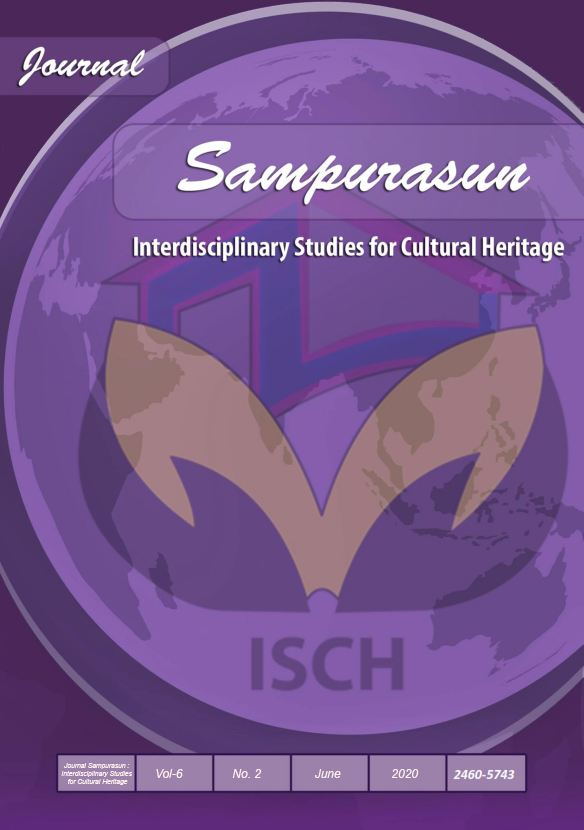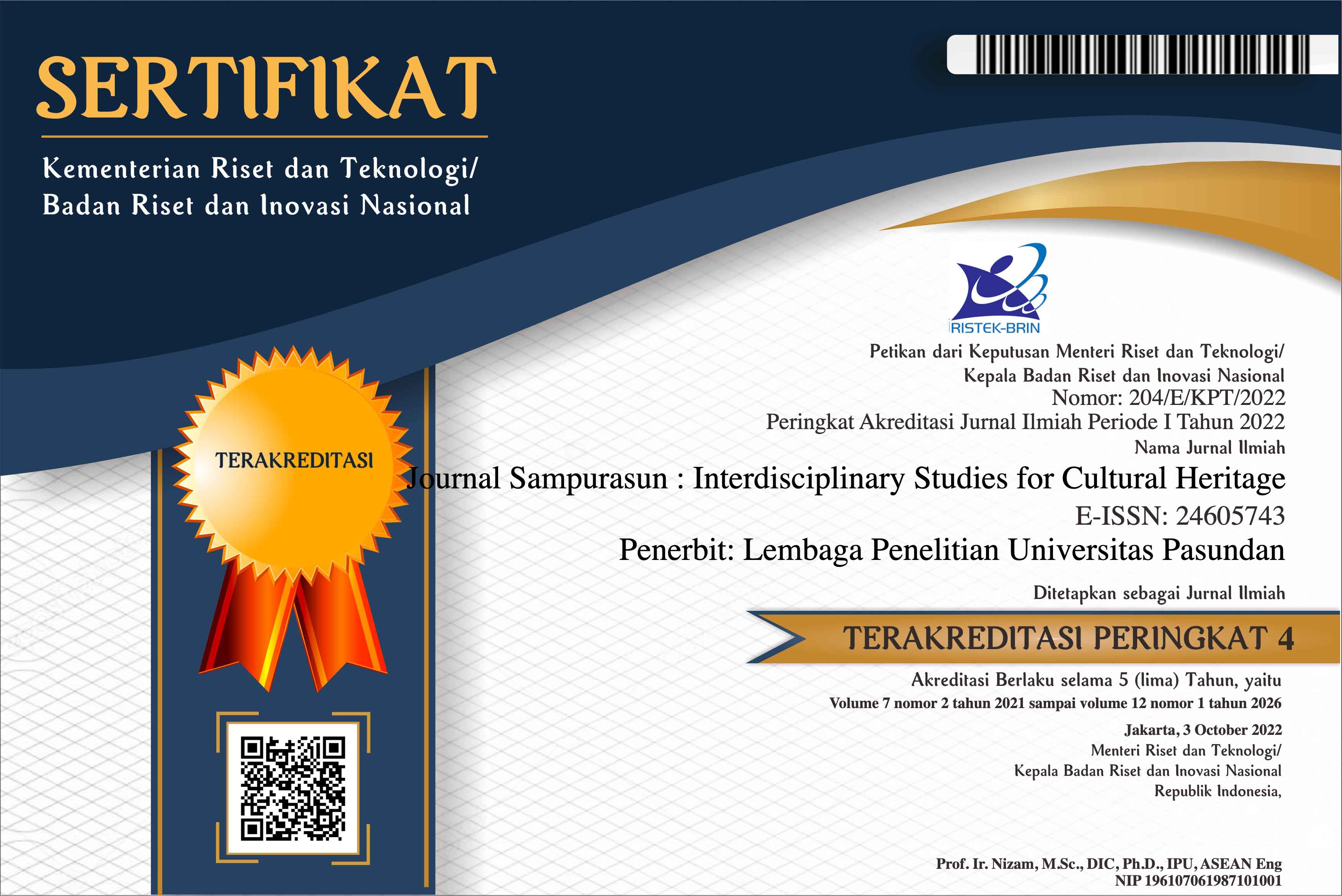CREATIVE ECONOMY ON E-WAROENG KUBE
DOI:
https://doi.org/10.23969/sampurasun.v6i1.2565Keywords:
creative economy, KUBE e-waroeng, creativityAbstract
ABSTRACT
Creative economy is the creation of added value (economic, social, cultural, environment) based on ideas that are born from the creativity of human resources (creative people) and based on the use of knowledge, including cultural and technological heritage. Creativity is not limited to works based on art and culture, but can also be based on science and technology, engineering and telecommunications. There are 3 main things that are the basis of the creative economy, including creativity, innovation and discovery.
E-warong KUBE is a community empowerment program in the economic field and through the Prosperous Indonesia Community Card issued by BNI is expected to empower the poor to achieve a prosperous society. This program facilitates economic transactions for residents receiving the Family Hope Program (PKH). The amount of non-cash food aid is Rp. 110,000.0 / KPM / month, the assistance cannot be collected in cash, and can only be done with rice and / or eggs in e-warong. If assistance is not spent in that month, the value of assistance will still be stored and accumulated in the Food Aid Electronic Account.
The aim of KUBE e-waroeng can be achieved through increasing the ability or empowerment of families and communities, as well as increasing community access to social resources in the community so as to foster creativity, innovation and discoveries that can make e-waroeng have economic value to realize development a sustainable economy based on creativity.
Keyword : creative economy, KUBE e-waroeng, creativity
Downloads
References
DIREKTORAT JAMINAN SOSIAL DIREKTORAT JENDERAL PERLINDUNGAN DAN JAMINAN SOSIAL KEMENTERIAN SOSIAL, BUKU KERJA PENDAMPING DAN OPERATOR PKH. Indonesia: DIREKTORAT
Galton, M. (2010). Assessing group work. In International Encyclopedia of Education (pp. 342–347). https://doi.org/10.1016/B978-0-08-044894-7.00356-0
Hart, S. M. (2010). Self-regulation, corporate social responsibility, and the business case: Do they work in achieving workplace equality and safety? Journal of Business Ethics, 92(4), 585–600. https://doi.org/10.1007/s10551-009-0174-1
Hay, R., & Gray, E. (1974). Social Responsibilities of Business Managers. Academy of Management Journal, 17(1), 135–143. https://doi.org/10.2307/254777
Inkpen, A. C., & Tsang, E. W. K. (2005). Social capital networks, and knowledge transfer. Academy of Management Review, 30(1), 146–165. https://doi.org/10.5465/AMR.2005.15281445
Jung, D. I., & Sosik, J. J. (2002). Transformational Leadership in Work Groups: The Role of Empowerment, Cohesiveness, and Collective-Efficacy on Perceived Group Performance. Small Group Research, 33(3), 313–336. https://doi.org/10.1177/10496402033003002
Mathieu, J. E., Gilson, L. L., & Ruddy, T. M. (2006). Empowerment and team effectiveness: an empirical test of an integrated model. The Journal of Applied Psychology, 91(1), 97–108. https://doi.org/10.1037/0021-9010.91.1.97
Orovwuje, P. R. (2001). The business model and social work: a conundrum for social work practice. Social Work in Health Care, 34(March 2014), 59–70. https://doi.org/10.1080/00981380109517017
Purnomo, R. A., Si, M., & Indonesia, P. P. (n.d.). Ekonomi Kreatif.
Ridley-Duff, R. (2008). Social enterprise as a socially rational business. International Journal of Entrepreneurial Behaviour and Research, 14(5), 291–312. https://doi.org/10.1108/13552550810897669
Sakarya, S., Bodur, M., Yildirim-??ktem, ??zlem, & Selekler-G??ksen, N. (2012). Social alliances: Business and social enterprise collaboration for social transformation. Journal of Business Research, 65(12), 1710–1720. https://doi.org/10.1016/j.jbusres.2012.02.012
Y. Sariningsih and U. P. Bandung, “Kreativitas dan inovasi pelaku kube,” vol. 1, no. 1, pp. 18–37, 2018.
Downloads
Published
Issue
Section
License
Copyright Notice
Authors should not withdraw their submitted papers because the withdrawal wastes voluntary works devoted by an associate editor and reviewers. But, we accept the withdrawal of a submitted paper if authors have unavoidable reasons. In the event that a manuscript is to be withdrawn from submission to Sampurasun Journal, a letter must be sent to the editorial office requesting withdrawal by e-mail (sampurasunjournal@unpas.ac.id) with its scanned PDF file, before the notification of acceptance for publication.
The withdraw request letter must include the following information. Paper ID, Paper title, Authors names, Reason why the paper must be withdrawn, and Date and signatures of all the authors (or signature of the contact author).
If only the contact author signs the letter, he/she must obtain the agreement of the withdrawal from all the other authors and the letter must include the description that all the other authors agreed the withdrawal. The journal will not withdraw a manuscript from peer review until such a letter has been received. Authors must not assume their manuscript has been withdrawn until they have received appropriate notification from the editorial office. Withdrawal of a manuscript subsequent to acceptance for publication will only be granted in the most exceptional of circumstances.
After the paper is accepted for publication, the withdrawal is not permitted in principle. The authors must always pay the charge even if the withdrawal is permitted. Any request of withdrawal that does not follow the above procedure is treated as invalid. If illegal submission, e.g., plagiarized or duplicate submission, is found for a paper, the withdrawal of the paper will never be permitted and the authors will be punished based on the rule. It is not acceptable practice to withdraw a manuscript in the event of acceptance at another journal. This constitutes dual submission. The editorial office of the other journal will be notified of your actions. In such circumstances Sampurasun ISCH may chose to impose appropriate punitive action subject.
Withdrawal Penalty
Author is not allowed to withdraw submitted manuscripts, because the withdrawal is waste of valuable resources that editors and referees spent a great deal of time processing submitted manuscript, money and works invested by the publisher. If author still requests withdrawal of his/her manuscript when the manuscript is still in the peer-reviewing process, author will be punished with paying $200 per manuscript, as withdrawal penalty to the publisher. However, it is unethical to withdraw a submitted manuscript from one journal if accepted by another journal. The withdrawal of manuscript after the manuscript is accepted for publication, author will be punished by paying US$500 per manuscript. Withdrawal of manuscript is only allowed after withdrawal penalty has been fully paid to the Publisher. If author don't agree to pay the penalty, the author and his/her affiliation will be blacklisted for publication in this journal. Even, his/her previously published articles will be removed from our online system.


















